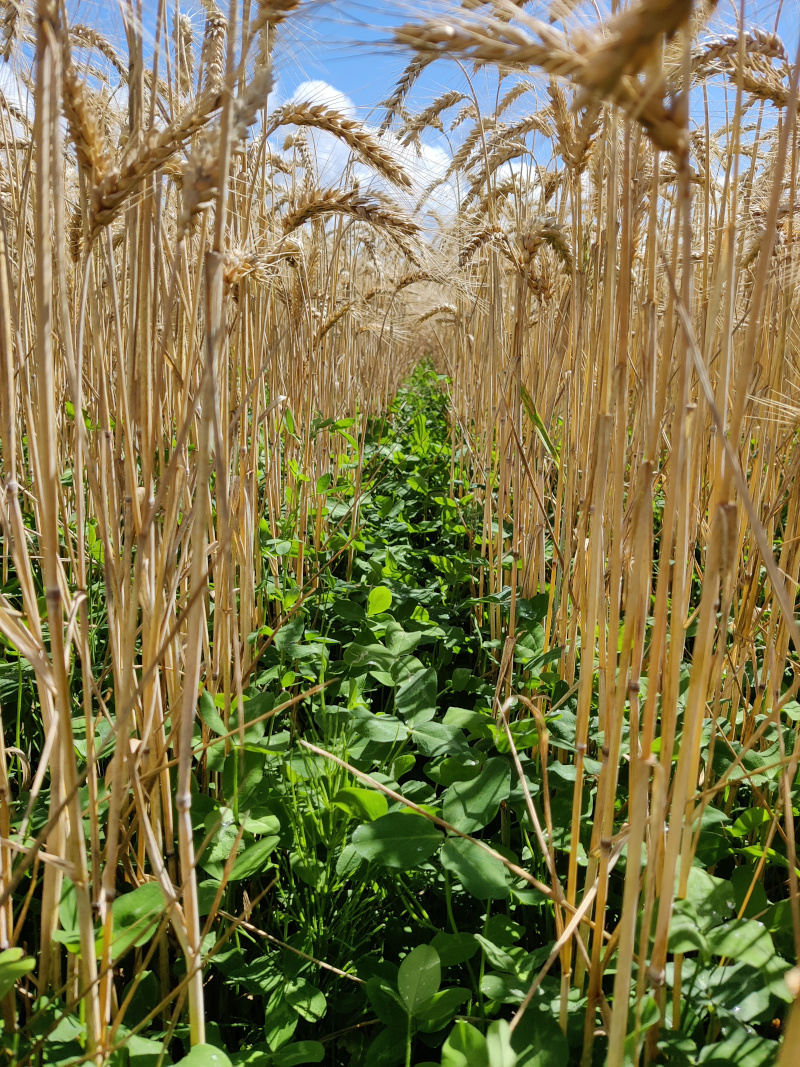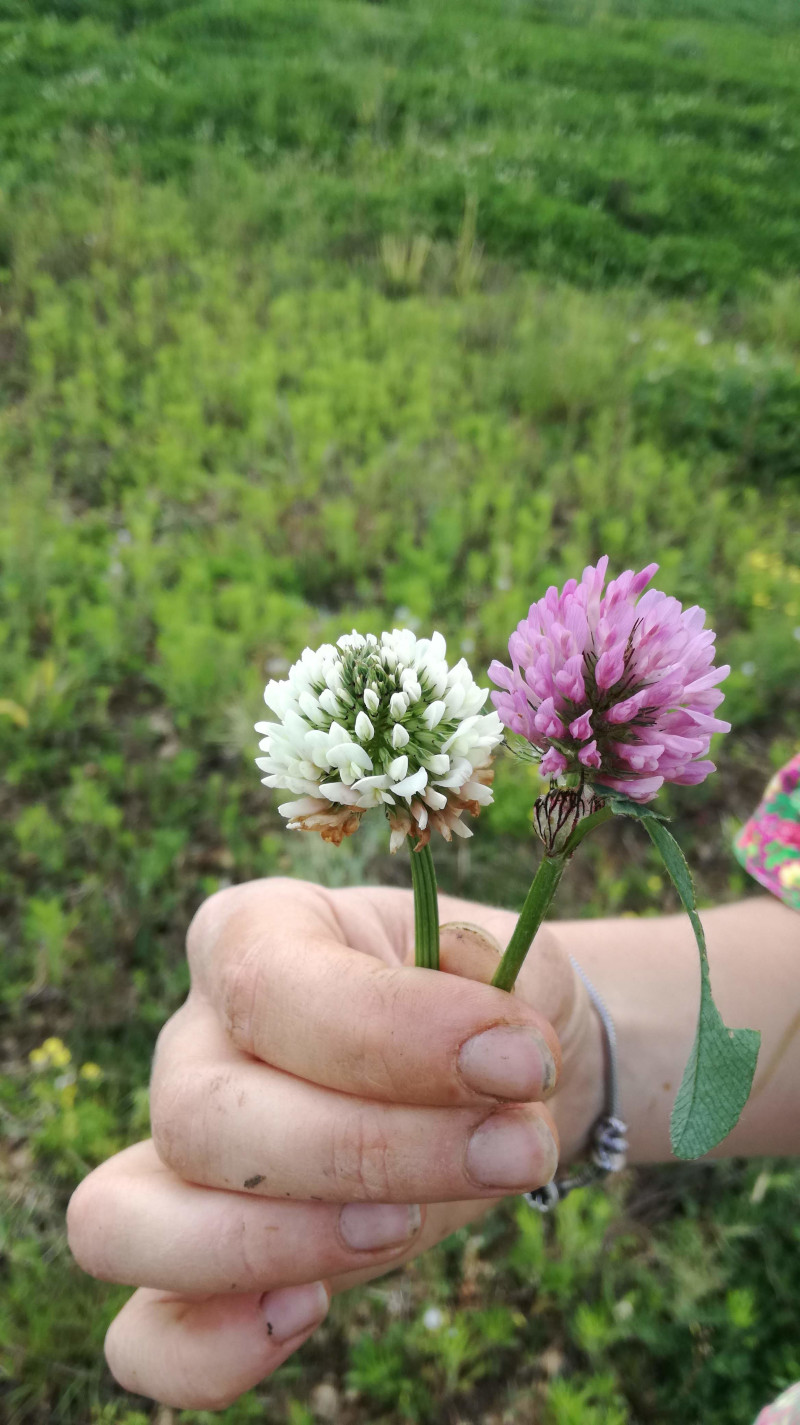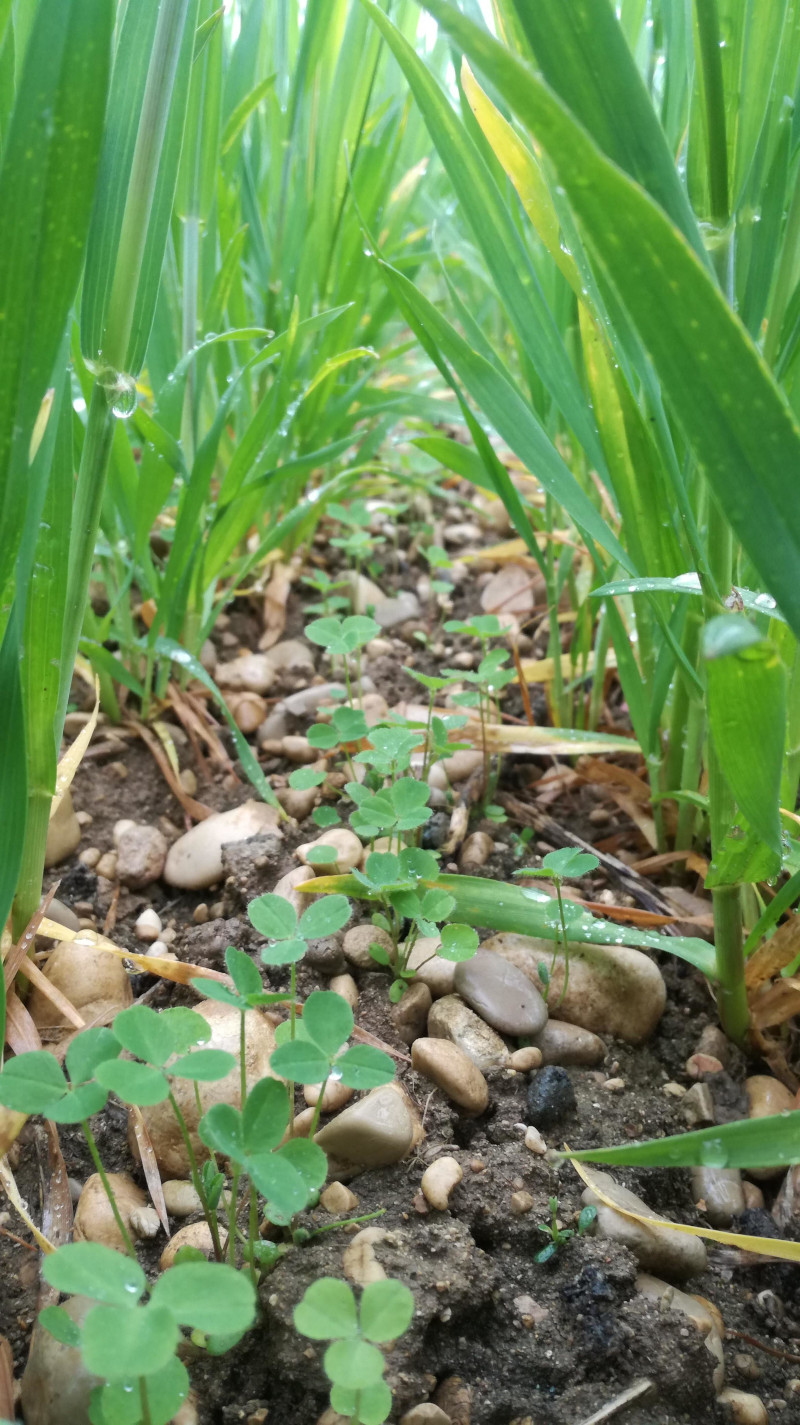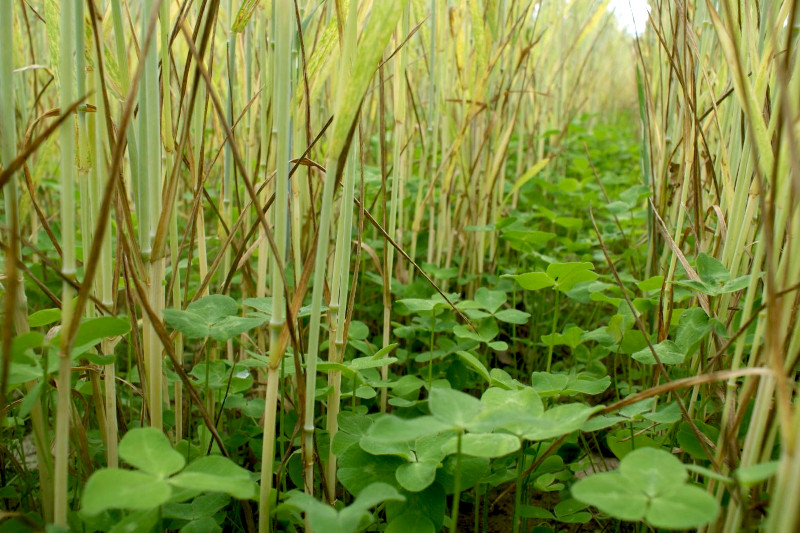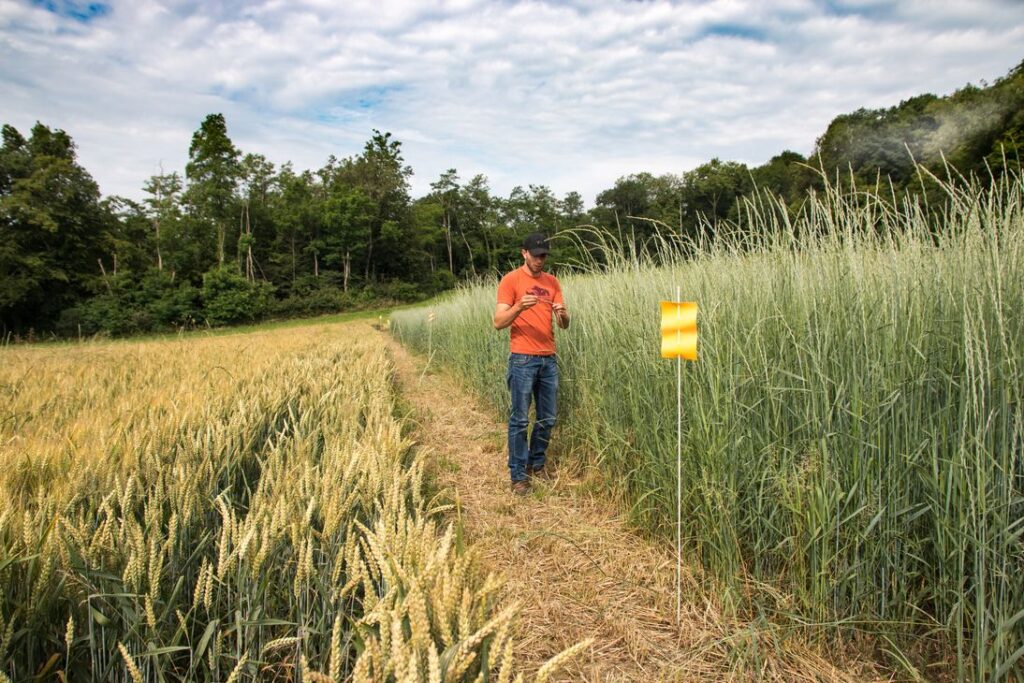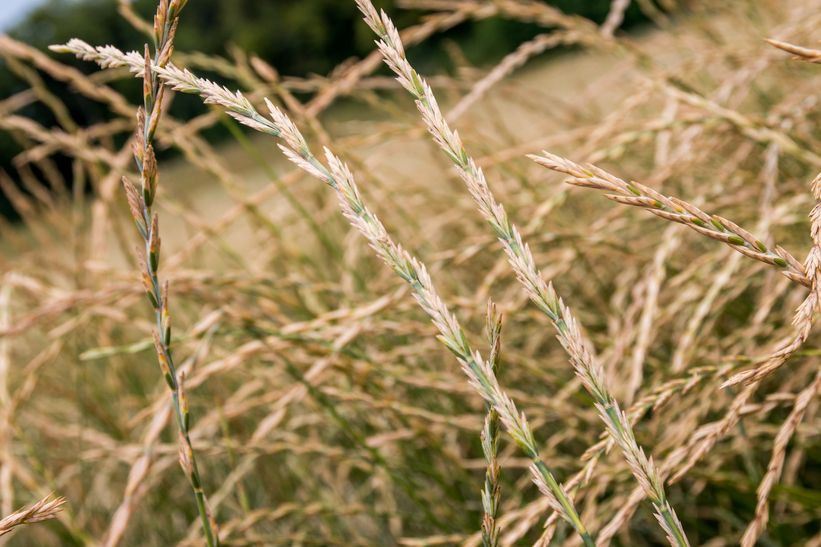
We work to promote an agroecological transition by making the most of natural processes. We also develop pioneer research link to perennial herbaceous plants.
Multi-services cover crops
Since 2009, different research on the integration of legumes into cropping systems as multi-services cover crops has been carried out. The legumes (or Fabaceae) are widely used in agriculture for their ability to fix atmospheric nitrogen (through root symbiosis) and naturally enrich the environment with a mineral element that is often a limiting factor in agriculture. Our work in this field has focused primarily on forage legumes, which also play a role in soil protection and improvement.
We were particularly interested in winter cereals (mainly wheat – Triticum aestivum or barley – Hordeum vulgare) combined with a legume cover crop (clover, alfalfa, pea, faba bean, etc., alone or in mixtures). Our overall aim is to increase our understanding of how to use multiservice plant cover to promote the agroecological transition of cereal production systems. By this we aim to determine the extent to which cover crops can replace the use of external chemical inputs for plant protection, crop fertilization, and enhance weed management and soil health.
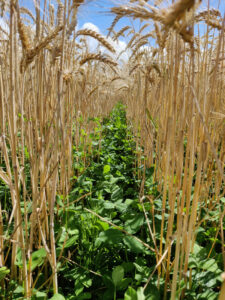
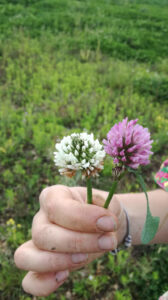
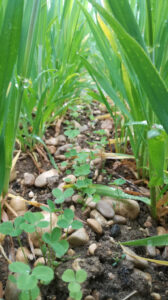
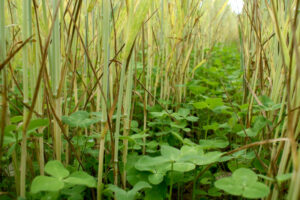
Our work in this topic clearly illustrates how we can promote an agroecological transition in agricultural systems by making the most of natural processes that can reduce or replace the use of agricultural external inputs. It should be noted, however, that these processes are considered as more difficult to control/predict by farmers. Farmers involved with us in experiments on those techniques stress the importance of changing their way of thinking, of being less in a permanent search for optimal performance and more in the acquisition of margins for error/maneuvering. Some insist on the relevance of aiming for a realistic and acceptable minimum performance, on the importance of considering the medium term, performance stability and system resilience. In this way, only pleasant surprises can be expected.
- Nutrient recycling (N, P, K etc.)
- Soil cover
- Wedding and pest management
- Soil organic matter and carbon storage
Unlike other practices that are technically more difficult to implement, such as direct seeding under a living cover, associate cover crops are easier to implement because they allow for more flexible management than direct seeding under cover, and do not necessarily require major investment in equipment. Similarly, they require less change when compared to farmers’ usual practices than a transition to direct seeding under permanent cover. Our research has shown that the benefits of these cover crops are often underestimated. On the other hand, like all techniques based on living organisms, they are complex and tricky to manage, and disturbance such as climate change involve to review our points of reference and think about strategies to ensure more stable performance and greater system resilience.
Perennial grains
The introduction of perennial herbaceous plants, progressively selected to improve grain production, makes it possible to offer permanent soil cover, forage biomass production complementary to grain production. Additionally, the restoration of ecological functions often altered by annual cropping systems due to the discontinuity of growth periods and chronic disturbances generated by tillage can be achieved.
Since 2016, ISARA has been working on the topic of “perennial cereals” as a new and potential lever for diversifying cereal and grazing systems. Our work focuses on the possibilities of using perennial relatives to straw cereals (wheat, barley, rye…), today mainly based on the case of the species Thinopyrum intermedium (Kernza ®).
Pioneer in this field in France, ISARA has been able to develop this work in collaboration with North American universities and institutes, as well as with Gembloux AgroBioTech in Belgium, and Arvalis-Institut du végétal, INRAE and the cooperative Oxyane in France.
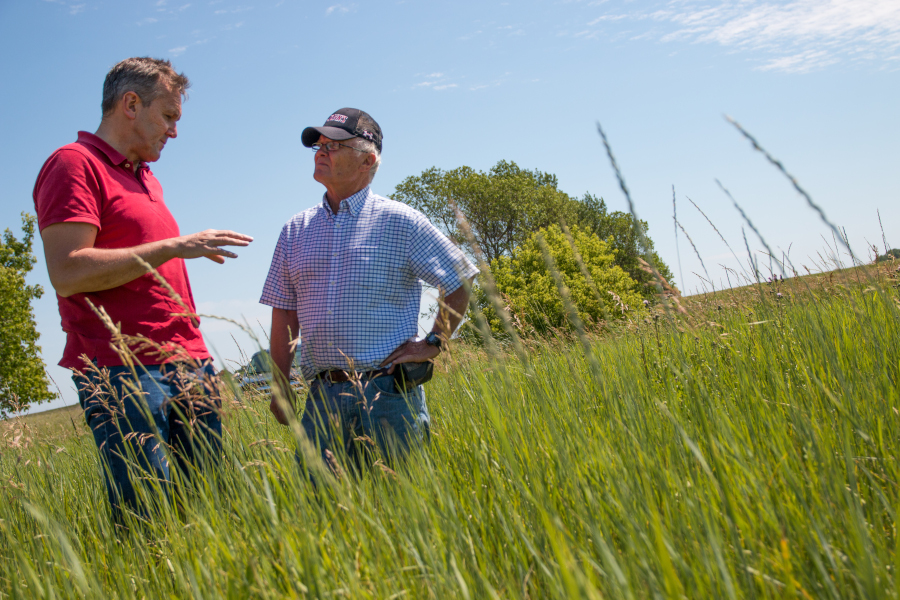
Compared with other subjects studied at ISARA, the particularity of the “perennial cereals” topic is that it is a highly exploratory topic. No seeds are currently available from seed companies or cooperatives, and there is no associated market in France. Grain yields are very low (300-1500 kg/ha), and should more be referred to as “proto-cereals” rather than “cereals”. The great interest of this subject is to give life to research areas where we can take an interest in plants that are completely new and unknown to our agricultural systems, and think long-term.
NAPERDIV – Nature-based perennial grain cropping as a model to safeguard functional biodiversity towards future-proof agriculture
CERPET – Perennial grains for an agroecological transition of cropping systems
Perennial cereals are new crops resulting from the domestication and selection of perennial plants related to our annual crops. Grain production is enhanced by selection, while the perennial nature of the plant is preserved. In this way, grain harvests can be carried out without having to resow the crop, which grows back after harvesting. Today, almost all agronomic research in Europe on perennial cereals related to straw cereals is carried out on the species Thinopyrum intermedium, due to the history of selection and the availability of seeds. Other species are being studied in Asia, North America and Africa, such as perennial rice, perennial sorghum, sunflower, sainfoin… Only perennial rice in Asia is now a recognized crop, and sufficiently productive to be used by farmers as a substitute for conventional rice crops. Research is also underway on barley (Hordeum bulbosum), rye (Secale montanum) or perennial wheat varieties (Triticum x Thinopyrum), but breeding work has not yet resulted in varieties or populations with field applications that would be the subject of agronomic and ecological work, with the exception of a few studies on perennial rye.
Our work on perennial cereals – in conjunction with the varietal selection work carried out on these cereals – CLAS’s teams are studying:
- Production potential: yield and cereal-feed value
- The most suitable practices and technical itineraries
- The phenotypic characteristics (functional traits) of the crop and their influence on its agronomic and ecological properties.
- Influence on the regulation of bio-aggressors
- Potential for reducing input use and improving the physical, chemical and biological properties of soils.
- The relevance of this type of crop in the face of increasing climatic hazards (intensity and scarcity of spring and summer rainfall).

